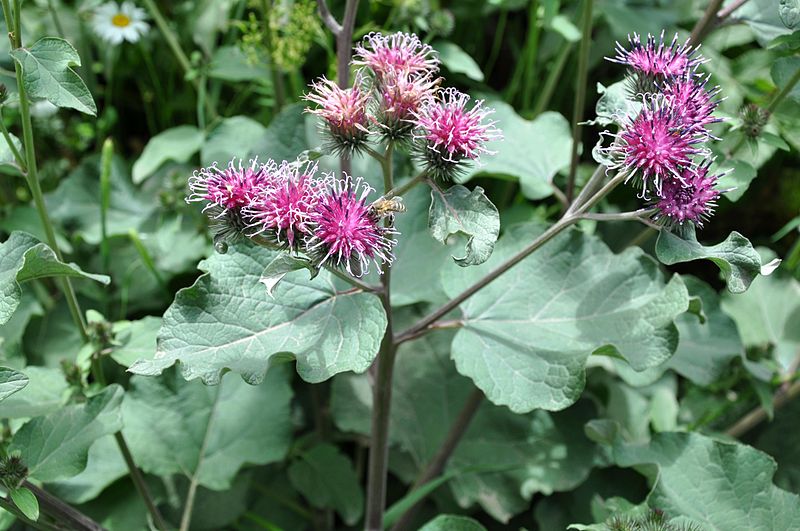
Growing Burdock The Complete Guide to Plant, Grow and Harvest Burdock
Burdock plant (Arctium lappa) This plant has wavy-edged, arrow-shaped leaves and flower heads in burr like clusters. It grows up to 2 meters (7 feet) tall, with purple or pink flowers and a large, fleshy root.. Burdock plant picture identification guide. Category: Plant guide. Tags: edible plants, plants. Post navigation.

Burdock PlantLore
Burdock Plant Uses. Among the many burdock plant uses is in the treatment of scalp and skin problems. It is also known to be a liver treatment and stimulates the digestive system. It is a detoxifying herb and diuretic and has also been used as an antidote in some cases of poisoning. In China, the seeds are used to treat colds and cough.
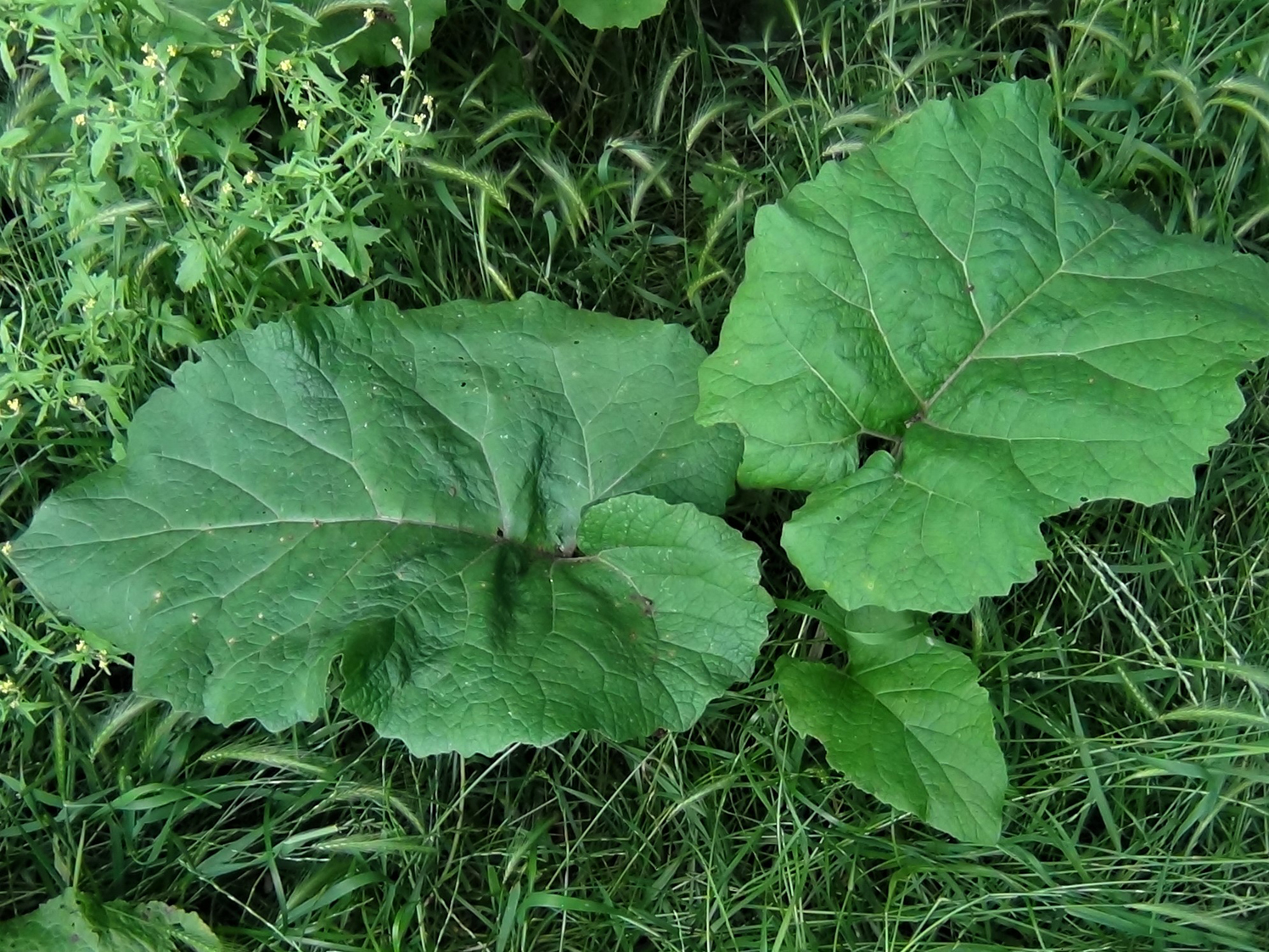
Common Burdock, Lesser Burdock, Arctium minus, Arctinum lappa.
Another characteristic of the burdock plant is its burs, which are the inspiration for Velcro. These burs are spiky and cling to clothing and animal fur, helping the plant disperse its seeds. While the burs may be more noticeable during the later stages of the plant's growth, they are still worth observing when trying to identify a burdock plant.

Common burdock Invasive Species Council of British Columbia
Arctium is a genus of biennial plants commonly known as burdock, family Asteraceae. Native to Europe and Asia, several species have been widely introduced worldwide. Burdock's clinging properties, in addition to providing an excellent mechanism for seed dispersal, led to the invention of the hook and loop fastener.
:max_bytes(150000):strip_icc()/_MG_7644-56a317a75f9b58b7d0d04ffb.jpg)
How to Grow Burdock
How to identify A tall plant, Greater burdock has large, downy, heart-shaped leaves with wavy margins. It produces egg-shaped, thistle-like flower heads that appear in loose clusters and eventually give rise to the familiar sticky burs with their large hooks. Distribution Mainly found in Central and Southern England.

Common Burdock Edible, Medicinal, Cautions & Other Uses The Cargo
The burdock genus consists of ten to fourteen species. Here are the four most common types of burdock plants. Lesser burdock (Arctium minus) Contrary to its name, lesser burdock can grow to a height of 1.5 to 2 metres. The leaves of the lesser burdock are actually quite large as well.
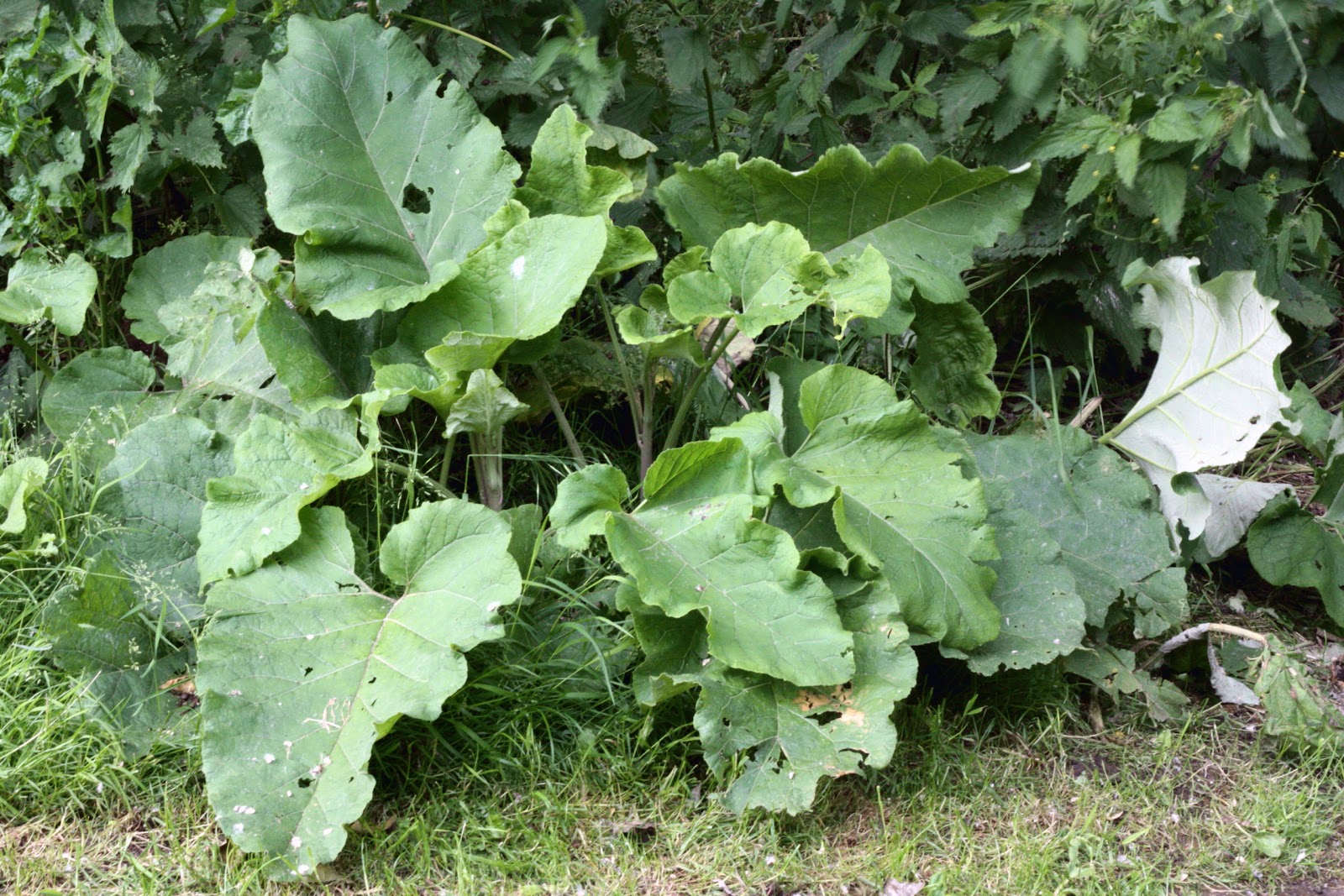
fergus the forager Burdock
How to Identify Burdock. These plants are impressive in stature with mature Greater Burdocks reaching from 5 to 9 feet / 1 ½ - 2 ¾ meters. The stem is branched, and the entire plant is pale green. The flowering season is from late summer well into autumn. Leaf: The leaves are green on top and whitish on the underside due to the down that.

Arctium minus Burdock) Minnesota Wildflowers
Identification: Stems: are erect, coarse, branched and thick, have a reddish tinge and may be grooved or angular. Mature plants grow 1 to 3 m tall. Leaves: Rosette leaves are large, hairy, and heart-shaped and readily shade out smaller plants. Stem leaves alternate and are broadest at the stalk. Leaf edges are wavy or toothed. Leaves

Common Burdock Cooperative Weed Management Area
Common burdock Arctium minus (Hill) Bernh.. Family: Asteraceae (Composite family) Life cycle: Biennial Native status: Introduced from Europe by early immigrants. Habitat: Pastures, disturbed areas with little competition from adjacent plants General description: Rosette of large, egg to heart shaped leaves the first year; in second year branched flower stalks elongate up to 4 to 5 ft tall.
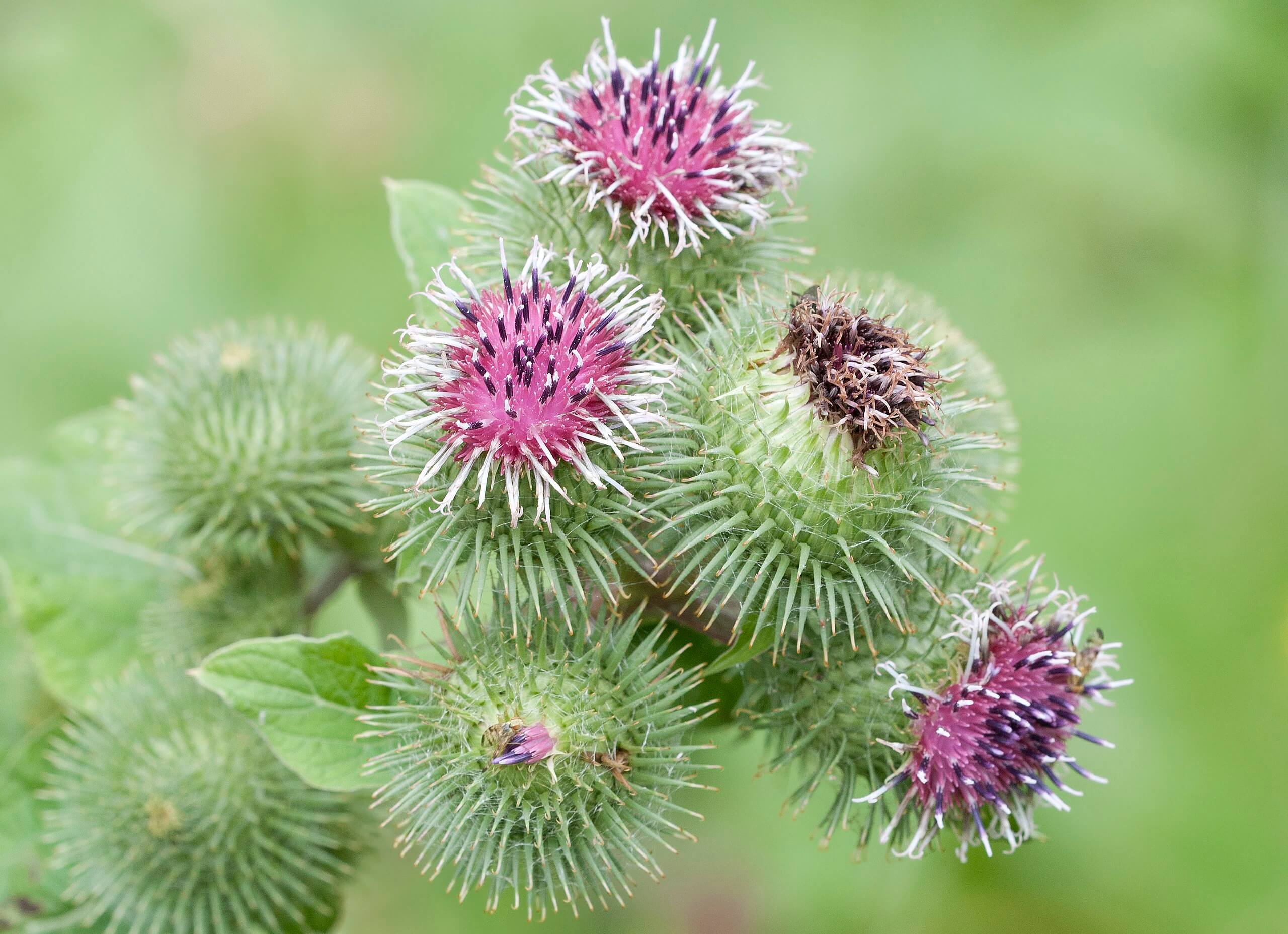
Burdock, Distinctive Flowers and Nutritious Roots Eat The
Common burdock's oblong cotyledons. Once larger leaves emerge, the margins are wavy. A second year plant in the rosette stage after over-wintering with its rhubarb like leaves and wavy leaf margins. A purplish to white and round flower with its hooked bristles. The brown burs that attach easily to many things with each holding several (~40.

Great burdock Identification Earth&Jungle
Plant burdock in loamy soil with a neutral pH between 6.6-7.5. You need soft, loose soil to harvest the roots. Burdock roots can be deep, so if you have solid, compacted soil, you'll find getting to them difficult. I've had success with mixing a bit of sand and wood chips into the soil to keep it loose.
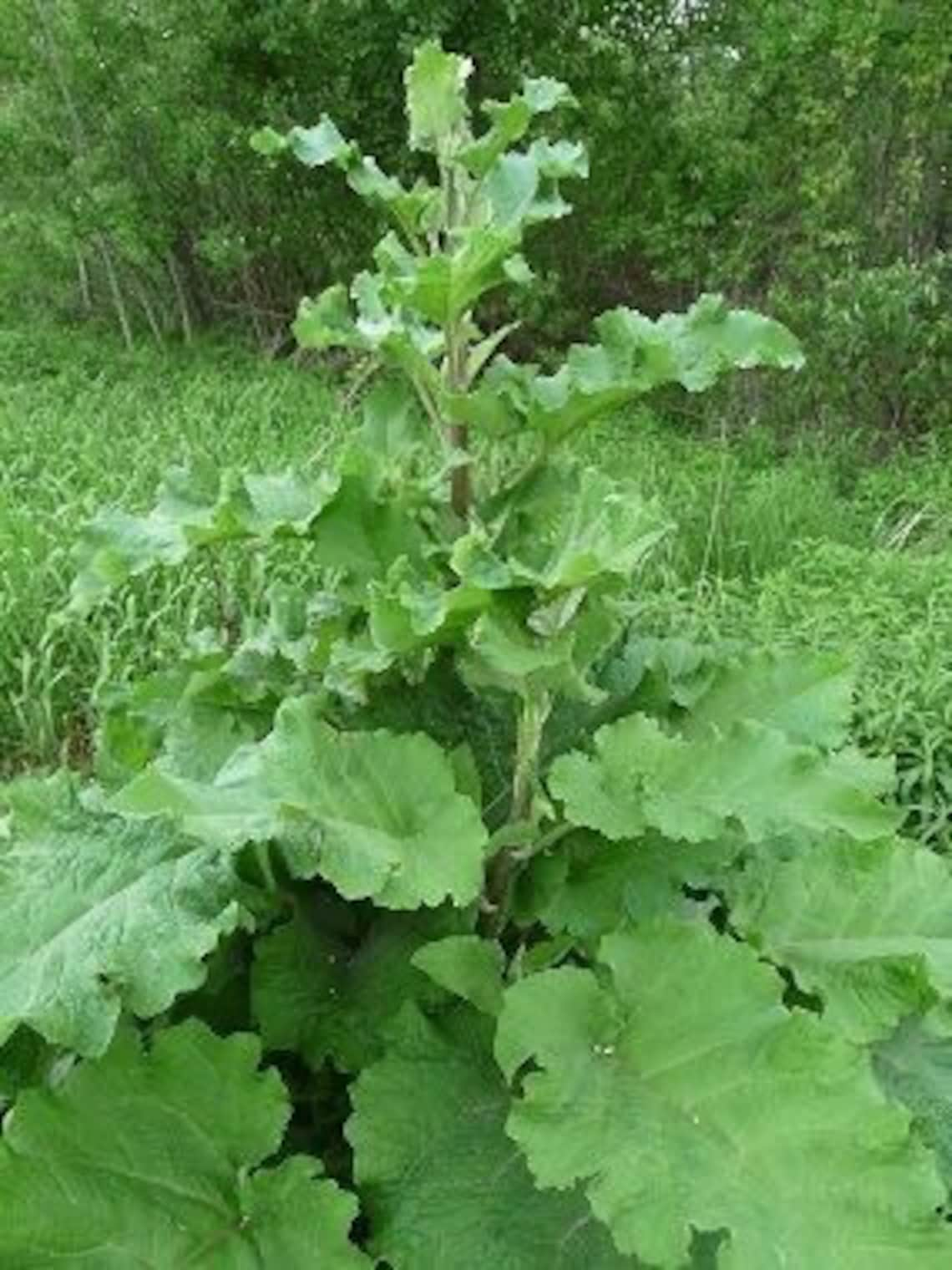
UK Wild harvested Burdock seeds arctium lappa Organic. Etsy
Look for stalks that are still tender and have a vibrant green color. Using a sharp knife or garden shears, cut the stalks close to the ground, allowing the plant to continue growing and producing new stalks. Harvesting Burdock Seeds: H arvest the flower heads primarily for the seeds rather than the flowers themselves.

Burdock A Foraging Guide to Its Food, Medicine and Other Uses
Arctium lappa (Greater Burdock): Arctium lappa, commonly known as Greater Burdock, is also a biennial plant and can grow taller than Arctium minus, reaching heights of up to 2-3 metres. The leaf is quite large, heart-shaped, and have a velvety texture on the underside. The stems are stout, and the flower heads are similar in appearance to Arctium minus, with purple or pink disc florets and.
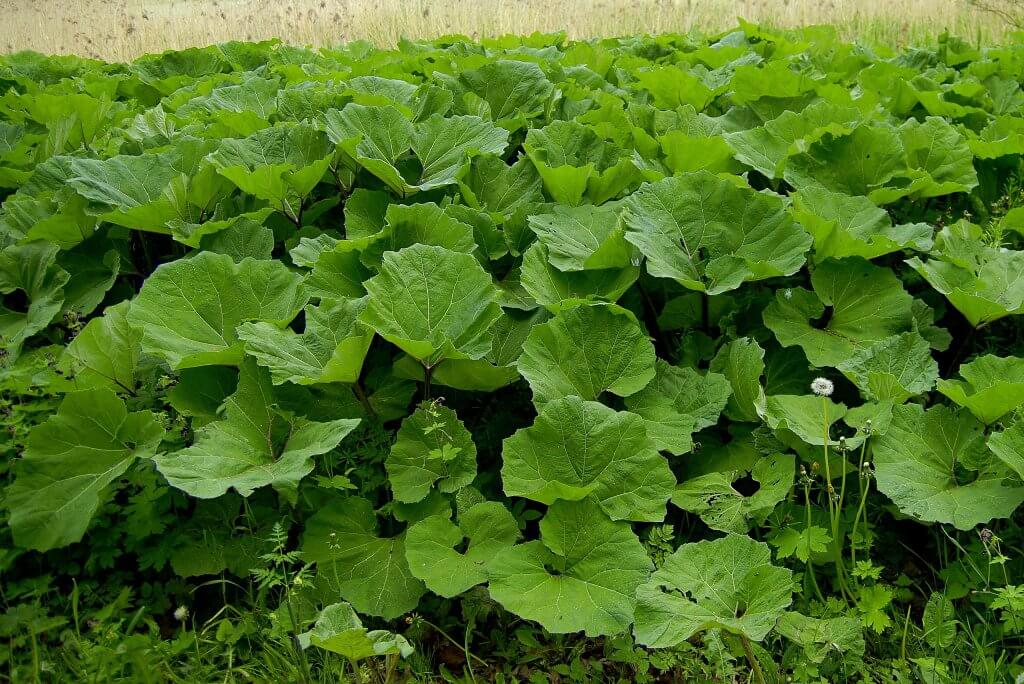
Burdock, Distinctive Flowers and Nutritious Roots Eat The
Woolly Burdock (Arctium tomentosum) is wild, edible and nutritious food. Identify woolly burdock via its pictures, habitat, height, flowers and leaves.. While we strive to be 100% accurate, it is solely up to the reader to ensure proper plant identification. Some wild plants are poisonous or can have serious adverse health effects.
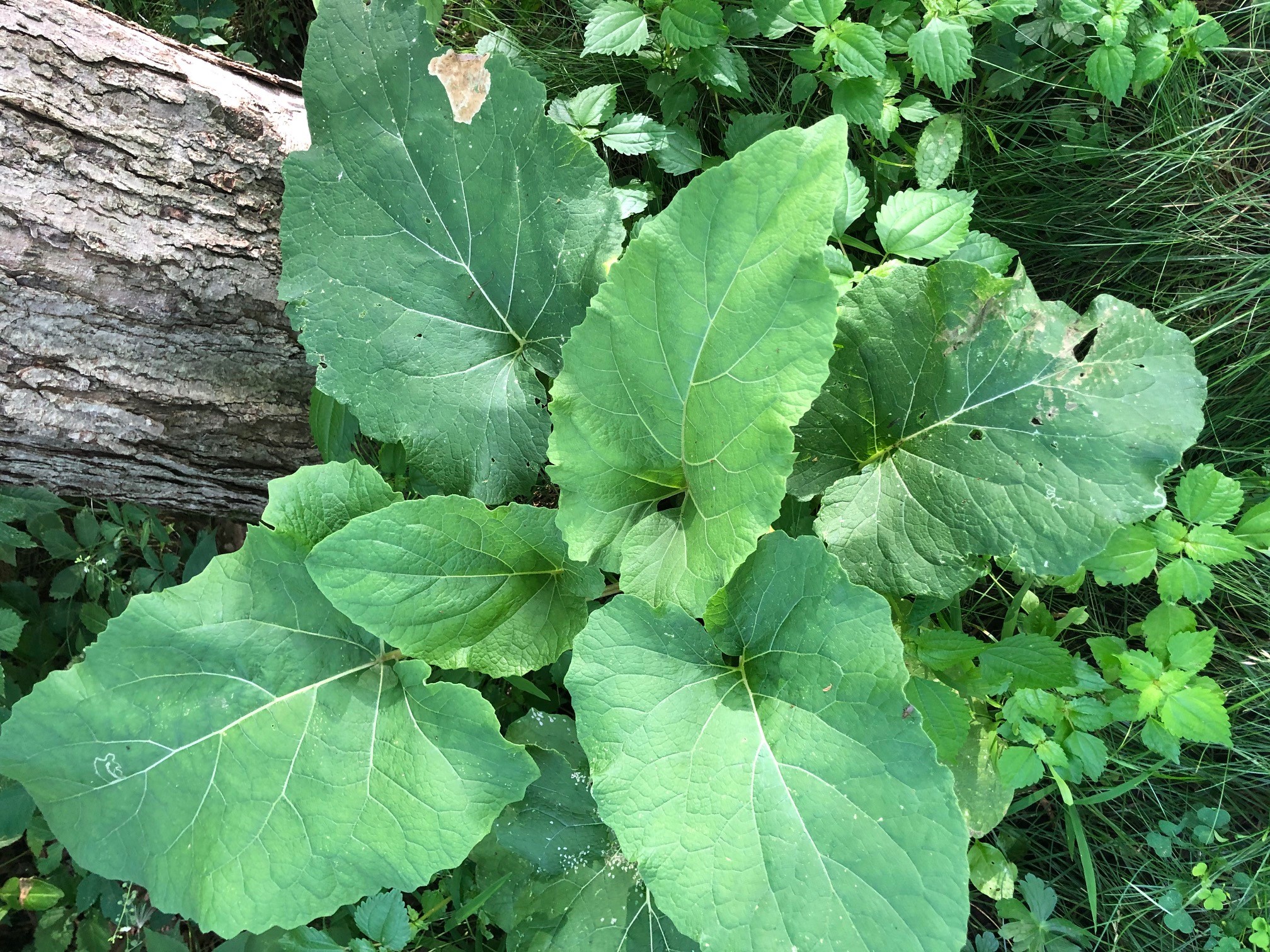
Common burdock Arctium minus Bernh. Plant & Pest Diagnostics
How to Grow Burdock From Seed . Plant burdock seeds about 1/2 inch deep and at least 8 inches apart. Keep the soil moist until germination, which takes no more than seven days. Once the seeds sprout, almost no care is required. The roots will be ready for harvest in about 90 days, though young leaves can be picked much earlier.
.JPG)
Common Burdock — to know the land
Common burdock (Arctium minus) grows in most of the US, except Florida and Hawaii. It also extends across southern Canada. Greater burdock (Arctium lappa) has a smaller range, growing in northern US states from California east to Maryland, and north across southern Canada. It is also found in Hawaii, North Carolina, and Georgia. Identification